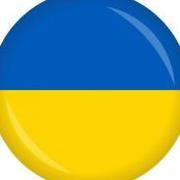-
Content Count
108 -
Joined
-
Last visited
About Kohlrausch
-
Rank
Member
Profile Information
-
Gender
Male
-
Location
Berlin, Germany
-
Interests
kayaking, photography, old technology
LW Info
-
Leatherwork Specialty
breaking needles ;-)
-
Interested in learning about
sewing machines
-
How did you find leatherworker.net?
googling sewing machines ;-)
-
Yes, stitch length regulator is marked with v as in vorwärts/forward and r as in rückwärts/reverse. Greets Ralf C.
-
Hi, the 230 uses householdmachine needles only, which may pose a restriction or two. There have been no variants for roundshank needles. Wheather it will cope with waxed duck canvas will depend on how many layers of what thickness of how tightly woven canvas with how sticky waxing you try to sew with what needle point and what kind of thread driven by what exactly kind of motor. Also there have been different needle plates with different sizes of needle holes and different feed dogs. Teflon presser feet might help a bit. The machines have been designed with profesional seamstresses in mind working from home on bedsheets, table cloths and normal clothing. With the standard motor KU52 they do 1500 stitches/min at 40 Watts output resulting in 0,25 Nm torque. That is only half the power of a cheap China made entry level sewing machine from a discount store with 35 watts/650 stitches and 1/6 of the power of a Sailrite. And the 110-volts-KU52 have even been a bit weaker than the 220 volt ones, but in the US the Pfaff 230 often has been sold with other motors. If it is used in a table you can fit the machine with a servo motor, bit if you are setting up a fixed table i would probaby look at a proper tailor's machine in the first place. Greets Ralf C.
-
I don't remember the exact values, but in older user manuals I have seen values like 600 spm for backtacking, 300 for needle up/down and 150 for thread cutting. So trying to do that at full speed may be a bit adventurous. Greets Ralf C.
-
How bout this? https://www.kornetshop.com/deutsch/elektromotoren/servo-motor-jm822-650w/#cc-m-product-7750616786
-
That's old casting vs. new casting. Greets Ralf C.
-
Maybe I have overlooked it, but upstate where? Could help to recommend local brands. A (used) Pfaff 138 B with standard-, teflon- and roller presser foot and a (new) slow running servomotor with 40 mm pulley might be a good start. Total cost would be about 220 Euros over here. Pfaff 335-clones (made by Shanggong) with stand and slow running servo motor can be had for 880 Euros in Germany plus 70 Euros shipping (incl. sales tax). Greets Ralf C.
-
Hi, that's a highspeed garment sewing machine designed to do 4500 stitches/minute. The "A" in Pfaff-designations refers to light capacity, lightweight materials, the "S" refers to Stoff, german for fabric. Think of curtains, shirts, bedsheets. I assume, posterity will be able to find out, because, as you write, they do show up in searches. Cost varies, 138s go for 40 to 70 Euros in Germany. They can handle shoe uppers as in ladies' boots, not workboots or walking boots. Much of the practical usability will depend on the motor and the presser feet. Greets Ralf C.
-
Hi, first of all I would advise against buying from Yaya-online. They also list anal- and penis plugs, mouth gags, vagina speculas, surgical instruments, diet food which in my opinion does not exactly make them sewing machine specialists. 2: The motor you have found is also offered for the Pfaff 130, but the mounting bracket is too short for the 130 and it is also offered for the Pfaff 260, which does not even have the necessary motor mounting block. 3: The motor is advertised as CE conforming, but does not seem to have any sticker or other sign of CE, which in my opinion would make it illegal to sell in the EU. All goods sold in the EU must conform with EU regulations, which is declared by the manufacturer (and checked by nobody) in a declaration of conformity and the specific CE sticker or mould. 4: Yaya's return policy only allows you to return the motor if it has not been installed and tested. So if you don't like the black, you can return it. If you find it too week or too fast, it will be your problem. 5: Yaya does not care for technical data. They will pass on whatever the mfgr printed on whatever, and if that doesn't make any sense or is physically impossible they neither check nor care nor correct mistakes. 6: The motor is quoted to do 8000 rpm with a 15mm pulley which would bring the Pfaff 30 to 2000 stitches per minute which is too fast for the oscillating hook machine. You want to stay at or below 1500 spm. 7: They don't say how many steps there are in the footpedal. The worst I have seen was three steps (off, minimum, full throttle). 8: They don't give the minimum working speed of the motor. 9: Doesn't matter, the motor is sold out anyway. Yaya is notorius for advertising goods they don't have. The amperage is the fuse rating of the motor and usually has a small safetymargin, so the given amps will be higher than the actual power consumption. 240 Volts and 0,38 amps would be 91,4 Watt power consumption, take off the safety margin and we are looking at an 80 Watts motor. This kind of motor has power factors between 0,35 and 0,55, with the 0,35 motor being a single outlier. The typical range is 0,45 to 0,55. The average, when I compared motor data that I have found on photos and spec sheets was exactly 0.5. Really, that Wernard motor is as good as it gets, you will not gain any usability by buying another little piggipack motor. The Pfaff 30 is very similar to the Singer 15. You can read everything Wizcrafts has written about the Singer 15 in this forum and directly apply it to your machine. HTH Greets Ralf C.
-
Hi, Eddy occasionally reorganizes his homepage. Der Nähmaschinenfachmann now can be found at https://www.occaphot-ch.com/bernina-original-service-manuals/ Greets Ralf C.
-
Hi, the Pfaff 130 was designed as a commercial machine alright, but for womens' tailoring and linnen stitching. Think silk blouses and bedsheets. The 138 has been designed for mens' tailoring and industrial garment production. The 138 has am much stronger presser-foot spring. Weak spot in the 130 is the needle bar clamp which lacks clamping power if the 130 is used for heavy work. There have been several variants of the 138. I recommend the old black ones with needle system 134. There have also been some with more exotic needle systems and household needles. The 138 works well with a roller foot. The Pfaff 34, 38, 134, 138, 238 etc. use a Pfaff-specific high shank foot. There will be few aftermarked feet. Pfaff also made an adapter, part number 6603 which converts the high shank machines to standard low shank. If you want to go really exotic you can look for a Pfaff 38 C/D with 6 mm zigzag and double roller foot.Never seen one even on the internet, but I have the manual ;-) Greets Ralf C.
-
Hi, lateral shuttle movement would do the trick. Mitgehender Greifer in Krautspeak. The Solent Ocean XL sailmaking machine would be an example of the technology. Greets Ralf C.
-
Hi, this appears to be the motor Sailrite is demonstrating here against their MC-SCR-system. They stopped the sewpro - set to slow sewing - with one finger. Greets Ralf C.
-
Hi Alex, talk to Frank Brunnet. http://www.frank-brunnet.com/ He is the Cowboy Bob of our side of the pond. I will probably get one of those http://www.ebay.de/itm/leiser-230-V-Motor-800-W-passend-für-Industrienähmaschine/322847634323?ssPageName=STRK%3AMEBIDX%3AIT&_trksid=p2055119.m1438.l2649 in the next couple of days. Greets Ralf C.




